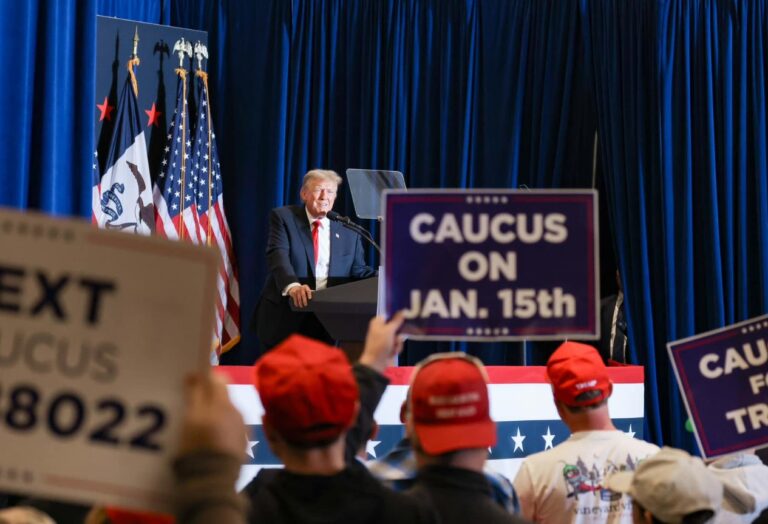Donald Trump’s was perhaps the least surprising victory in the history of the Iowa caucuses. The avalanche of votes won by the former president in the first competition for the Republican nomination is perfectly in line with what the polls have predicted for months.
Neither of Trump’s primary rivals, Nikki Haley and Ron DeSantis, have emerged as primary challengers, so the vote against Trump remains divided. Meanwhile, his ideologically closest rival, Vivek Ramaswamy, has announced that he will withdraw and support Trump.
Table of Contents
Massive victory for Trump in Iowa
Trump’s victory in Iowa was historically massive. He received the most votes in all but one of Iowa’s 99 counties. A record: no one in Iowa had won by more than 12 points before. Trump’s margin is approaching 30%.
With nearly all votes counted, Trump won with 51%, with DeSantis at 21% and Haley at 19%. A survey of Iowans helps explain why Trump’s bid to win a new term has been successful so far.
According to the survey conducted by CBS News and reported by the BBC, about half of the Republican participants in the caucuses consider themselves part of the “Make America Great Again” movement.
Who are Trump’s supporters
Trump won among young and old, men and women. He also won over evangelical and far-right conservative voters that he had difficulty winning over in 2016. Typically, defeated presidential candidates fade from memory, never able to shake off the stain of defeat.
Trump, however, managed to convince Republicans—in Iowa and nationally—that he didn’t lose. A large majority of Iowa caucus-goers told CBS they believed Trump was the true winner of the 2020 presidential election. A number that increases to 90% among Trump supporters. Trump’s dominance within the Republican Party has been irrefutable, but his victory in Iowa is extraordinary.
Three years ago, he ended his first presidential term under a cloud of controversy, his campaign to challenge his defeat to Democrat Joe Biden culminating in the January 6 Capitol riot. He faces two criminal trials stemming from those actions. Now, as the winner of the Iowa caucuses, he has taken the first significant step toward becoming the Republican Party’s nominee in November’s presidential election. But Trump still has work to do to become the Republican standard-bearer.
How are Trump’s challengers doing
Next week he faces Nikki Haley in New Hampshire, where polls show his once-dominant lead has been cut to single digits. That the Iowa game would be Trump’s had been clear from the start. The question was which candidate would occupy second place.
In the end it was DeSantis, but that’s not a great achievement, given how close he was to Haley after investing so much time and resources in Iowa. A result that could make Trump’s victory even more significant, since his “divide and conquer” strategy will come to influence the primaries.
The only candidate who withdrew, Ramaswamy, will further expand the former president’s field, as public opinion polls show that his supporters rate Trump as second choice.
Although he only got 8% in Iowa, every bit of support counts, and Ramaswamy’s support will give Trump more fuel to run in New Hampshire. The Iowa result will also allow the former president to further focus his fire on President Biden.
For their part, Democrats appear to welcome the reckoning and the opportunity to exploit what they see as Trump’s vulnerabilities. A series of victories will still give the former president the look of a winner. As the fall general election approaches, Trump may prove to be a more formidable opponent than Democrats expected — or hoped for.
Read also: 2024 is a year of decisive elections: where to look and what to expect












